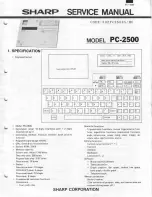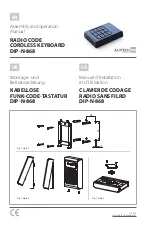
115
,,,,,,,,,,,,,,,,
,,,,,,,,,,,,,,,,
QQQQQQQQQQQQQQQQ
QQQQQQQQQQQQQQQQ
¢¢¢¢¢¢¢¢¢¢¢¢¢¢¢¢
¢¢¢¢¢¢¢¢¢¢¢¢¢¢¢¢
■
Touch Sensitivity
This function sets the keyboard touch sensitivity. The range is from “0” to “127”.
The higher the value the higher the sensitivity. When the touch sensitivity value is set
to “0”, “Off” appears in the display and the same volume is produced no matter how
hard you play the keys. — this setting can produce a more realistic effect with voices
that normally do not have touch response: e.g. organ and harpsichord.
■
Master Tuning
The Tuning function sets the overall pitch of the PSR-730/630 over a
±
100 cent
range (from –100 to +100) in 1-cent increments. Since 1 cent is 1/100th of a semitone,
the total tuning range is from a semitone below normal pitch to a semitone above
normal pitch.
• The “normal” tuning
value (“0”) can be re-
called by simulta-
neously pressing the
[–] and [+] buttons.
• Minus values can be
entered by using the
number buttons while
holding the [–] button.
■
Scale Tuning
Scale tuning allows each individual note of the octave to be tuned over range from
–64 to +63 cents in 1-cent increments (1 cent = 1/100th of a semitone). This makes it
possible to produce subtle tuning variations, or tune the instrument to totally different
scales (e.g. classic or Arabic scales).
First use the S.TuneNote function to select the note to be tuned. The range is from
C to B: C, C
#
, D, D
#
, E, F, F
#
, G, G
#
, A, A
#
, B.
• The scale tuning set-
tings are common to
each octave on the
keyboard.
• The Accompaniment
and Multi Pad sound
is affected by Scale
Tuning.
• The “normal” tuning
value (“0”) can be re-
called by simulta-
neously pressing the
[–] and [+] buttons.
• Minus values can be
entered by using the
number buttons while
holding the [–] button.
Then use the S.TuneValue function to tune the selected note as required.
note
note
■
Pitch Bend Range
See page 54.
■
Modulation Wheel
See page 55.
s e :
1 0 0
T o u c h S e n
t e :
C
S . T u n e N o
l u e : - 5 0
S . T u n e V a
0
T u n i n g :
D
b
E
b
C
#
D
#
G
b
A
b
B
b
F
#
G
#
A
#
C#
D#
F#
G#
A#
C
D
E
F
G
A
B
C D E F G A B
Overall Functions
















































